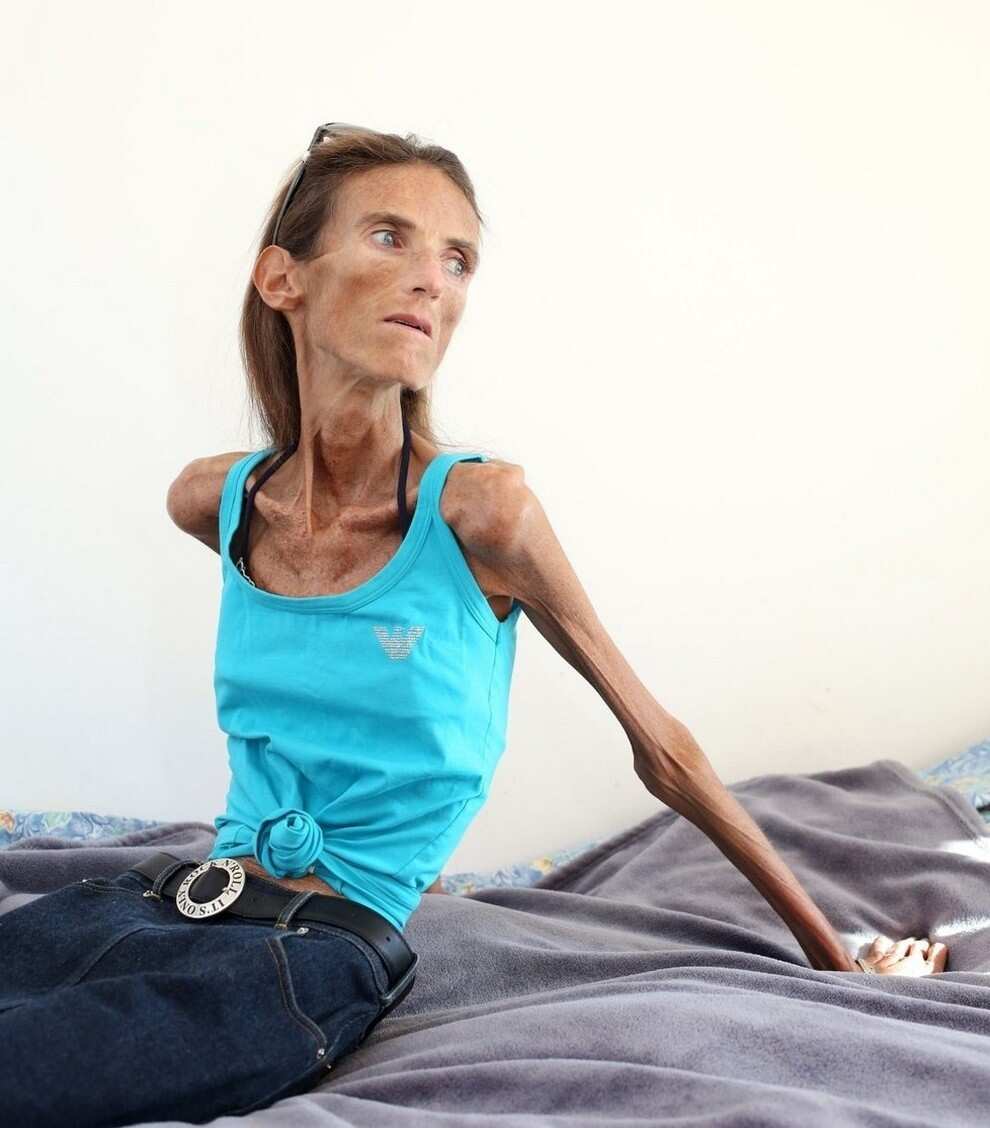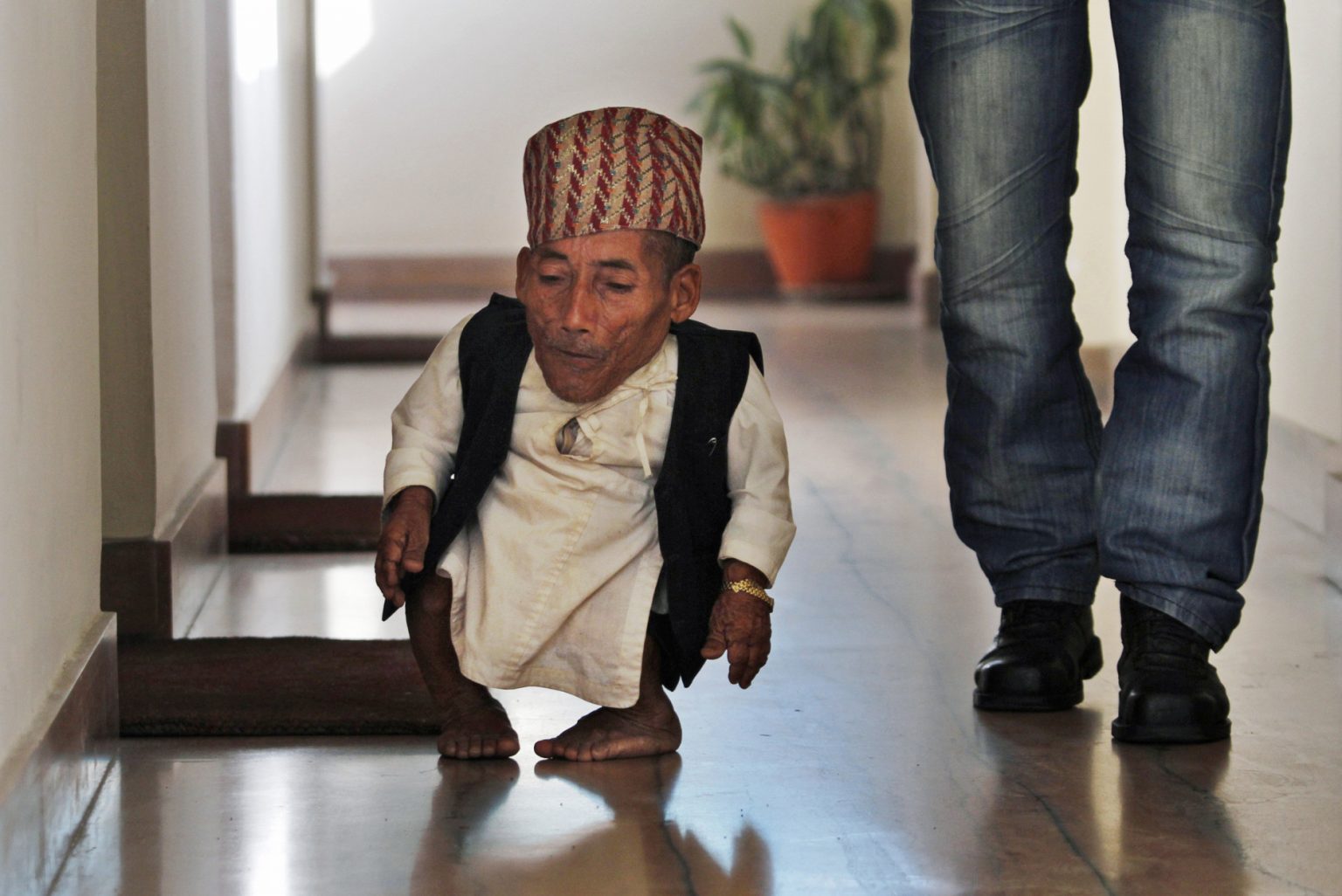The Thinnest Person In The World: A Comprehensive Exploration
The thinnest person in the world has always been a topic of curiosity and fascination for many. It is a subject that not only explores the physical dimensions of an individual but also delves into the medical, social, and psychological aspects surrounding extreme thinness. This article aims to provide a detailed understanding of the thinnest person in the world, shedding light on their story, challenges, and the broader implications of such cases.
The phenomenon of individuals being classified as the thinnest person in the world raises important questions about health, lifestyle, and societal perceptions. While some cases are attributed to medical conditions, others may involve lifestyle choices or genetic factors. Understanding these nuances is crucial to appreciating the complexity of such situations.
In this article, we will explore the life of the thinnest person in the world, examining their journey, challenges, and the impact of their condition on their daily life. We will also discuss the broader implications of such cases and the importance of raising awareness about health and wellness. Let's dive in!
Read also:Madre Meaning Exploring The Depth And Cultural Significance
Table of Contents
- Biography of the Thinnest Person in the World
- Physical Characteristics
- Medical Conditions Associated with Extreme Thinness
- Lifestyle Factors Contributing to Thinness
- Social Impact and Public Perception
- Health Implications of Extreme Thinness
- Case Studies: Real-Life Examples
- Genetic Factors and Their Role
- Psychological Effects of Being Extremely Thin
- Conclusion
Biography of the Thinnest Person in the World
Data and Personal Information
The thinnest person in the world, as recognized by various sources, often captures public attention due to their unique physical characteristics. Below is a summary of the individual's personal information:
| Name | Jyoti Amge |
|---|---|
| Age | 31 years |
| Height | 62.8 cm (24.7 inches) |
| Weight | 3.16 kg (6.97 lbs) |
| Residence | Nagpur, India |
| Occupation | Actress and Public Figure |
Jyoti Amge, while primarily known for being the shortest woman in the world, also holds records for her extreme thinness. Her condition is attributed to a rare genetic disorder called dwarfism, which affects her growth and development.
Physical Characteristics of the Thinnest Person
Understanding the Body Metrics
The physical characteristics of the thinnest person in the world are often a result of a combination of genetic, medical, and lifestyle factors. Below are some key points to consider:
- Height and Weight: Individuals classified as the thinnest often have significantly lower body mass compared to the average population.
- Body Composition: Muscle mass, bone density, and fat distribution play a crucial role in determining overall thinness.
- Proportions: The proportions of the body may appear disproportionate due to the extreme thinness.
According to a study published in the Journal of Clinical Endocrinology & Metabolism, individuals with extreme thinness often exhibit unique physiological traits that require specialized medical attention.
Medical Conditions Associated with Extreme Thinness
Exploring the Underlying Causes
Extreme thinness is often linked to various medical conditions that affect growth, metabolism, and overall health. Some of the most common conditions include:
- Dwarfism: A condition characterized by short stature and underdeveloped physical features.
- Hypothyroidism: A disorder affecting the thyroid gland, leading to reduced metabolic activity.
- Eating Disorders: Conditions such as anorexia nervosa can result in extreme weight loss and thinness.
A report by the World Health Organization (WHO) highlights the importance of early diagnosis and intervention in managing these conditions to prevent long-term health complications.
Read also:Best Guide To Hdhub4u Hindi Movies Everything You Need To Know
Lifestyle Factors Contributing to Thinness
Impact of Diet and Exercise
Lifestyle choices can significantly influence an individual's weight and body composition. Factors such as diet, exercise, and stress management play a crucial role in maintaining a healthy balance. For individuals who are naturally thin, certain lifestyle habits may further exacerbate their condition. These include:
- Caloric Deficiency: Consuming fewer calories than the body requires can lead to extreme thinness.
- High Metabolism: Individuals with a naturally high metabolism may find it challenging to gain weight despite adequate nutrition.
- Stress and Anxiety: Chronic stress can affect appetite and digestion, contributing to weight loss.
A study conducted by the National Institutes of Health (NIH) emphasizes the importance of personalized nutrition plans for individuals with extreme thinness to ensure proper nourishment.
Social Impact and Public Perception
Challenges Faced by the Thinnest Person
Social perception plays a significant role in shaping the experiences of individuals classified as the thinnest person in the world. Often, these individuals face unique challenges, including:
- Stigma and Discrimination: Misconceptions about their condition can lead to social isolation and discrimination.
- Media Attention: Constant media scrutiny can affect their mental well-being and privacy.
- Access to Resources: Limited access to specialized healthcare and support systems can hinder their quality of life.
Organizations such as the Little People of America (LPA) work tirelessly to advocate for the rights and well-being of individuals with unique physical characteristics, promoting inclusivity and acceptance.
Health Implications of Extreme Thinness
Long-Term Effects on Well-Being
Extreme thinness can have several health implications that require careful monitoring and management. Some of the most common concerns include:
- Osteoporosis: Reduced bone density increases the risk of fractures and other skeletal issues.
- Immune System Weakness: Malnutrition can compromise the immune system, making individuals more susceptible to infections.
- Cardiovascular Issues: Low body weight can affect heart function and circulation.
A report by the American Heart Association (AHA) underscores the importance of regular health check-ups for individuals with extreme thinness to monitor and address potential health risks.
Case Studies: Real-Life Examples
Stories of Individuals with Extreme Thinness
Examining real-life case studies can provide valuable insights into the lives of individuals classified as the thinnest person in the world. Below are a few examples:
- Jyoti Amge: As mentioned earlier, Jyoti's condition is attributed to dwarfism, which affects her growth and development. Despite her challenges, she has achieved success as an actress and public figure.
- Chandra Bahadur Dangi: Formerly recognized as the shortest man in the world, Chandra's extreme thinness was linked to his short stature and genetic factors.
These stories highlight the resilience and determination of individuals who overcome significant obstacles to lead fulfilling lives.
Genetic Factors and Their Role
Understanding the Genetic Basis
Genetic factors play a crucial role in determining an individual's physical characteristics, including height and weight. Mutations in specific genes can result in conditions such as dwarfism, which contribute to extreme thinness. Research published in the Journal of Medical Genetics provides valuable insights into the genetic basis of such conditions, paving the way for potential treatments and interventions.
Psychological Effects of Being Extremely Thin
Mental Health and Well-Being
Being classified as the thinnest person in the world can have profound psychological effects on an individual. Some of the most common concerns include:
- Self-Esteem and Confidence: Constant attention and scrutiny can affect an individual's self-perception and confidence.
- Anxiety and Depression: The pressure to meet societal expectations can lead to mental health issues such as anxiety and depression.
- Social Isolation: Feeling different from others can result in social withdrawal and loneliness.
Therapeutic interventions and support groups can play a vital role in addressing these psychological challenges, promoting mental well-being and resilience.
Conclusion
The thinnest person in the world represents a fascinating and complex subject that encompasses medical, social, and psychological dimensions. Through this article, we have explored the life of individuals with extreme thinness, examining their challenges, triumphs, and the broader implications of such cases. It is essential to approach this topic with sensitivity and understanding, recognizing the unique experiences and needs of these individuals.
We invite you to share your thoughts and insights in the comments section below. Additionally, feel free to explore other articles on our website for more informative content. Together, let's foster a culture of empathy, inclusivity, and awareness!
Article Recommendations


